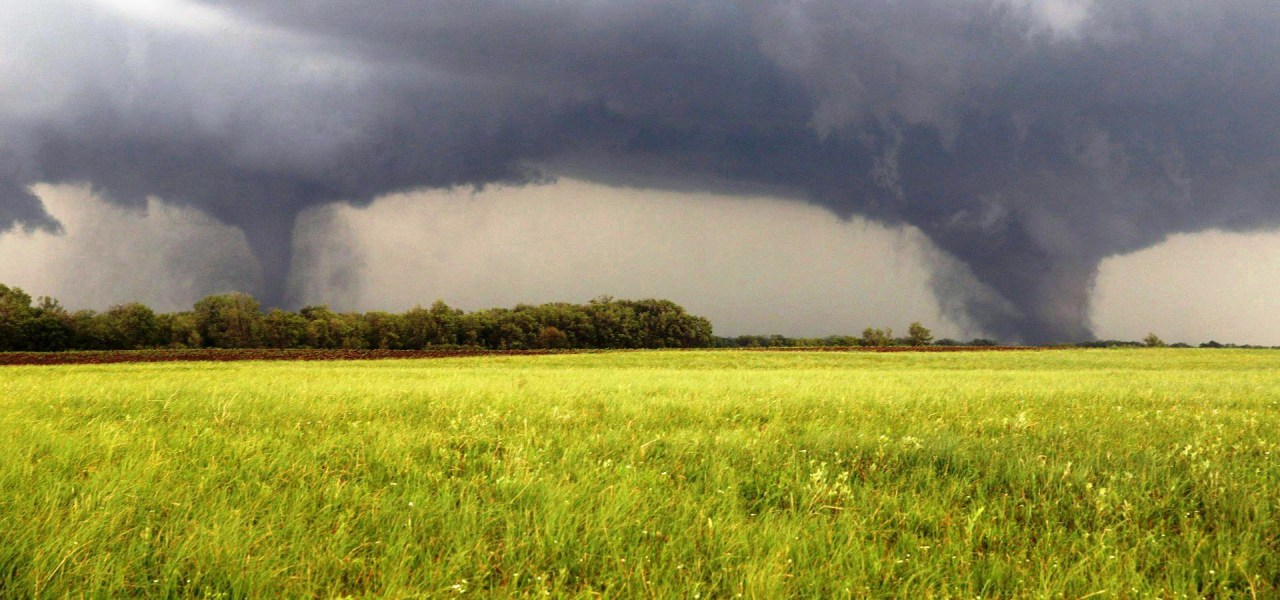NBC NEWS/ Science

The ominous funnels of two huge
tornadoes whirled simultaneously toward the Nebraska town of Pilger on
Monday night — a convergence of deadly weather that scientists said they
see only once every 10 to 20 years.
The twin twisters slammed their way through the small town, splintering trees, flattening houses and ripping their way across farmland. But as amazing and awful as the phenomenon looks, weather experts say it's not unprecedented.
No one can be really sure how often double twisters occur.
"They may actually be more frequent than we think," Greg Carbin, a meteorologist at the National Oceanic and Atmospheric Administration's Storm Prediction Center, told NBC News on Tuesday.
In any case, it’s rare to document a twin tornado as strong as the one seen Monday.
"I've been here at the University Corporation for Atmospheric Research
for 16 years," atmospheric scientist Jeff Weber said. "I've seen all
sorts of weather, but I've never seen the data for two tornadoes at the
same time like this."
What causes twin tornadoes?
"No two tornadoes are alike," Carbin said. "There's a spectrum of potential that exists anytime you have a violently rotating column of air in contact with the ground." That means there are many ways to make a double tornado.
One way is through what's known as the occlusion process. A twister starts to dissipate when it gets wrapped with cool, moist air — but in some cases, there's still enough energy in the storm system to spawn another twisting column of air nearby.
Harold Brooks, a senior scientist at the National Severe Storms Laboratory in Oklahoma, favors that scenario. "You can have the tornado that's dying still on the ground at the same time as the new one is formed," he told NBC News. "The overlap between the two was longer than normal, but that cycling process is relatively common."
Another possibility is that this was an extreme case of a multiple-vortex tornado, in which the storm's main vortex spawn other vortices. "Multiple vortices probably exist with every tornado, but they're usually just too small to see," Carbin said. It's far less common to have multiple vortices that are so evenly matched.
The third scenario is that these tornadoes were spawned by two separate supercells. "For that to happen simultaneously for two systems within a mile of each other, the odds are very small," Weber said. "But it can happen. ... I'm in the camp to believe that these were two separately formed tornadoes."
If that's the case, it was a singular stroke of bad luck for the residents of Pilger.
Has this happened before?
Yes, but the phenomenon isn't observed that often. "Every 10 or 20 years," Weber estimated. One famous case occurred during the Palm Sunday outbreak in 1965, when a twin twister killed 14 people in Indiana. An overlapping double-tornado was caught on video during a 1990 storm in Kansas, and another twin tornado was seen in Oklahoma in 1999.
Brooks said the tornado that devastated Moore, Oklahoma, last year "almost cycled" into a twin twister the way this week's storm did.
Are twin tornadoes more destructive than a single big twister?
"That's a great question, and one that we could possibly answer with modeling studies," Carbin said. "The destructive potential of a single tornado a mile wide is bad enough, but if you have another one in close proximity, you're potentially doubling that destructive force."
Brooks pointed out that the destructiveness of a tornado, even a twin tornado, depends on its path. The devastation in Pilger is bad enough, with two deaths and dozens of injuries reported so far, but Brooks said it could have been much worse. "If you move that think 30 miles and it gets into Sioux City, the death toll would probably be a lot higher," he said.
Can twin tornadoes be predicted?
"We're not even close to understanding the mechanisms that are at work here, other than to say we were well aware of the potential for violent storms three days in advance," Carbin said. "The storm scale model guidance that we use has been incredibly valuable in recent years, and seems to be better and better at predicting the areas that are at risk a day or two in advance."
Whether or not a storm spawns multiple vortices, or gives rise to twin twisters, is beyond the capability of current computer modeling. "Sometimes the atmosphere works in mysterious ways," Carbin said.
Will climate change affect the frequency of twin tornadoes?
Anytime an unusual weather phenomenon enters the spotlight, someone usually asks about the climate change connection. But Weber said double-barreled tornadoes are not easily factored into any of the climate models — analyzing climate trends down to the storm-by-storm scale is just too much of a stretch. "This is not a climate signal," he said. "This is a meteorological signal."
No comments:
Post a Comment